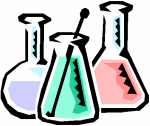Chemistry
|
27 january 2020 15:00:40 |
| Potent hemithioindigo-based antimitotics photocontrol the microtubule cytoskeleton in cellulo (Beilstein Journal of Organic Chemistry) |
|
Tweet Abstract
Background: Hemithioindigo is a promising molecular photoswitch that has only recently been applied as a photoswitchable pharmacophore for control over bioactivity in cellulo. Uniquely, in contrast to other photoswitches that have been applied to biology, the pseudosymmetric hemithioindigo scaffold has allowed the creation of both dark-active and lit-active photopharmaceuticals for the same binding site by a priori design. However, the potency of previous hemithioindigo photopharmaceuticals has not been optimal for their translation to other biological models.
Results: Inspired by the structure of tubulin-inhibiting indanones, we created hemithioindigo-based indanone-like tubulin inhibitors (HITubs) and optimised their cellular potency as antimitotic photopharmaceuticals. These HITubs feature reliable and robust visible-light photoswitching and high fatigue resistance. The use of the hemithioindigo scaffold also permitted us to employ a para-hydroxyhemistilbene motif, a structural feature which is denied to most azobenzenes due to the negligibly short lifetimes of their metastable Z-isomers, which proved crucial to enhancing the potency and photoswitchability. The HITubs were ten times more potent than previously reported hemithioindigo photopharmaceutical antimitotics in a series of cell-free and cellular assays, and allowed robust photocontrol over tubulin polymerisation, microtubule (MT) network structure, cell cycle, and cell survival.
Conclusions: HITubs represent a powerful addition to the growing toolbox of photopharmaceutical reagents for MT cytoskeleton research. Additionally, as the hemithioindigo scaffold allows photoswitchable bioactivity for substituent patterns inaccessible to the majority of current photopharmaceuticals, wider adoption of the hemithioindigo scaffold may significantly expand the scope of cellular and in vivo targets addressable by photopharmacology.
Beilstein J. Org. Chem. 2020, 16, 125–134. doi:10.3762/bjoc.16.14 |
| 175 viewsCategory: Chemistry |
 [ASAP] Mapping the Potential of Zero Charge and Electrocatalytic Activity of Metal-Electrolyte Interface via a Grain-by-Grain Approach (Analytical Chemistry) [ASAP] Mapping the Potential of Zero Charge and Electrocatalytic Activity of Metal-Electrolyte Interface via a Grain-by-Grain Approach (Analytical Chemistry)[ASAP] Water-Soluble Rhenium Phosphine Complexes Incorporating the Ph2C(X) Motif (X = O-, NH-): Structural and Cytotoxicity Studies (Inorganic Chemistry) 
|
| blog comments powered by Disqus |
MyJournals.org
The latest issues of all your favorite science journals on one page
The latest issues of all your favorite science journals on one page



